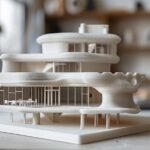In the fast-paced world of architecture, optimizing workflow is essential for increasing productivity, enhancing collaboration, and delivering high-quality projects on time. Architectural offices face unique challenges, including managing complex projects, coordinating with multiple stakeholders, and ensuring effective communication. This article outlines strategies to streamline workflows in architectural settings, ultimately leading to improved efficiency and project success.
Key Strategies for Optimizing Workflow

- Implementing Workflow Management Systems
- Adopting a robust workflow management system (WMS) can significantly enhance efficiency by automating repetitive tasks and streamlining processes. A WMS allows architects to assign tasks, set deadlines, and track progress in real-time. This centralized approach improves accountability and ensures that all team members are aligned with project goals.
- Utilizing Project Management Software
- Tools like Asana, Trello, or specialized architecture software such as COR or Workiom help in organizing tasks and facilitating communication among team members. These platforms provide visual dashboards that allow teams to see project timelines, responsibilities, and progress at a glance, reducing the risk of miscommunication.
- Enhancing Communication Channels
- Effective communication is crucial in architectural projects where multiple stakeholders are involved. Establishing clear communication protocols—whether through regular meetings, shared digital platforms, or instant messaging tools—can help ensure that everyone is informed and engaged. This reduces misunderstandings and keeps projects on track.

- Standardizing Processes
- Developing standard operating procedures (SOPs) for common tasks can help streamline workflows. By creating templates for frequently used documents or design processes, architects can save time and reduce errors. Standardization also facilitates training new employees, enabling them to contribute more quickly.
- Incorporating Collaborative Tools
- Collaboration is key in architecture, where input from various disciplines is often required. Tools that support collaborative design, such as Building Information Modeling (BIM), allow teams to work together seamlessly on shared models. These tools enhance coordination among architects, engineers, and contractors by providing a single source of truth for project data.
- Prioritizing Ergonomics and Workspace Design
- The physical workspace can impact productivity significantly. Designing an ergonomic office layout that encourages collaboration while providing quiet spaces for focused work can enhance employee satisfaction and efficiency. Consider incorporating flexible workstations that adapt to different tasks and team sizes.
- Continuous Training and Development
- Investing in ongoing training for staff ensures that team members are up-to-date with the latest tools and techniques in architecture. Workshops on software usage, project management skills, or sustainable design practices can empower employees to work more efficiently and creatively.
- Feedback Loops
- Establishing regular feedback mechanisms allows team members to discuss challenges and successes openly. This can be done through retrospectives after project completion or regular check-ins during ongoing projects. Feedback helps identify bottlenecks in workflows and fosters a culture of continuous improvement.
Also Read : Best Ways To Organize Your Master Bedroom Closet
Conclusion
Optimizing workflow in an architectural office setting is essential for enhancing productivity and ensuring project success. By implementing effective workflow management systems, utilizing project management tools, enhancing communication channels, standardizing processes, incorporating collaborative tools, prioritizing ergonomic workspace design, investing in continuous training, and establishing feedback loops, architectural firms can create a more efficient work environment. These strategies not only streamline operations but also foster a culture of collaboration and innovation that is crucial for thriving in today’s competitive architecture landscape.
FAQs
1. What is a workflow management system (WMS)?
A WMS is a software solution designed to streamline, automate, and manage complex business processes, ensuring tasks are completed efficiently.
2. How can project management software benefit an architectural firm?
Project management software helps organize tasks, facilitate communication among team members, track progress in real-time, and improve overall project coordination.
3. Why is effective communication important in architectural projects?
Effective communication minimizes misunderstandings among stakeholders, ensures alignment on project goals, and keeps projects on schedule.
4. What are standard operating procedures (SOPs)?
SOPs are documented processes that outline how specific tasks should be performed consistently within an organization.
5. How does ergonomics affect productivity in an architectural office?
An ergonomic workspace design enhances comfort and reduces fatigue among employees, leading to improved focus and productivity.





